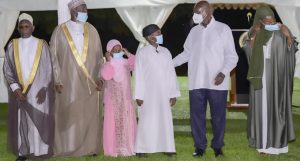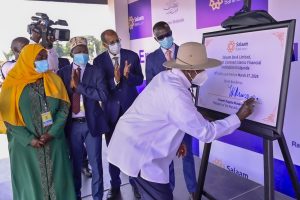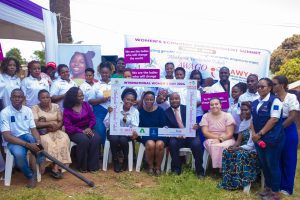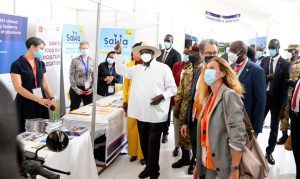Opinion: Hajjat Namyalo On The 1985 Katonga Battle

Around this time in 1985, the government forces of Uganda National Liberation Army (UNLA) were panicky because the National Resistance Army (NRA), headed by Yoweri Kaguta Museveni (now President), was resolutely planning attempts to liberate the other parts of Uganda like Masaka and Mbarara.
NRA, hitherto the Popular Resistance Army (PRA) launched the guerrilla war on February 6, 1981, following the rigged elections of December 10, 1980.
The NRA commenced the war with an attack on the garrison of Kabamba Military School with the objective of obtaining several guns but got about 40 rifles because of the resistance put up by the UNLA.
The NRA’s failure to capture numerous rifles at Kabamba has since been described by President Museveni as ‘God’s intervention’.
He said this during the 42nd anniversary of Tarehe Sita. He said, “I say that the failure to capture 1,000 rifles stored at Kabamba was God’s intervention because, at the time, even if we had captured those guns, the UPC government could have recaptured them from us because we had not yet gathered the thousands of our soldiers that the UPC had deliberately scattered all over Uganda.”
Such soldiers included Salim Saleh (now General), who was then in Karamoja, Ivan Koreta in Pacwach, Joram Mugume in Moroto, Mugume Chagaa in Jinja and Pecos Kutesa, who was still deployed in Nakasongola. By God’s grace, the NRA obtained more weapons during the subsequent attacks at Military installations.
By October 1985, the NRA’s outstanding hurdle was to overrun the River Kagera Bridge at Katonga, the gateway to Southwestern Uganda. By taking control of the bridge, the NRA intended to deny logistical supplies and personnel reinforcement to the government forces in Mbarara and Masaka. President Museveni said, “We dug in at Katonga in order to destroy the UNLA from there, far away from Kampala.”
Therefore, he deployed Saleh as the overall commander of the Military operation aimed at obtaining the bridge. Under Saleh were operation commanders – Pecos Kutesa and Fred Mugisha (1st Battalion) and Steven Kashaka and Ahmed Kashilingi (5th Batallion). Kutesa’s Unit blocked the bridge, while Kashaka’s Unit took guard of the Bridge’s southern side of Kampala – Masaka highway.
The Military undertaking set the UNLA into a state of desperation and ruthlessness against the innocent civilians. For example, the New York Times of October 8, 1985, reported “Hundreds of Government troops went on a rampage of Killings and looting in Western Uganda after hours of fierce fighting with rebels, witnesses said today.” It added, “Travelers reaching Kampala Kampala said 30 trunkfuls of soldiers who had been sent to dislodge guerilla of the NRA from western strongholds disbanded after coming under heavy artillery and gunfire near Kayabwe, 50 miles southwest of here.”
On October 13, the government troops and NRA had a fierce encounter at the bridge. Consequently, the NRA defeated UNLA and their associates, the former Uganda Army, and hence marched on and captured Kampala on January 26, 1986.
Because of the historical significance of the Katonga battle, the NRM Government has since named one of the National medals as the battle of Katonga. It is the highest military decoration awarded to individuals in recognition of their extraordinary instances of heroism in the Army.
In February this year, President Museveni was awarded the aforesaid medal in recognition of his liberation struggle.
The battle at Katonga should be a reminder to Ugandans to uphold the country’s peace and security, democracy, economic transformation, and emancipation of Youth and Women. This is the message we should amplify at the commemoration of President Museveni’s birthday at Kololo on September 8.





